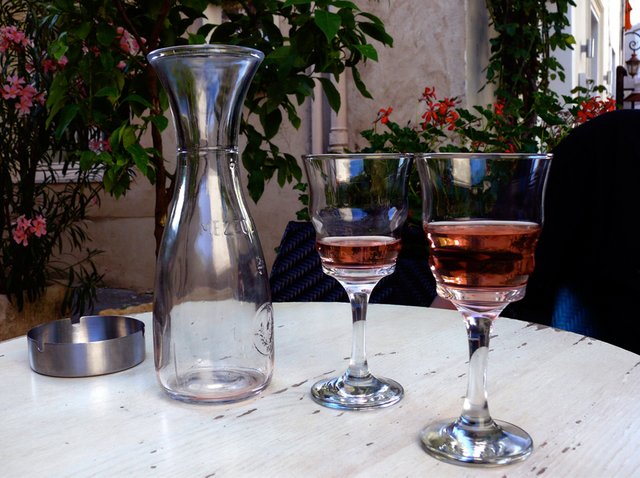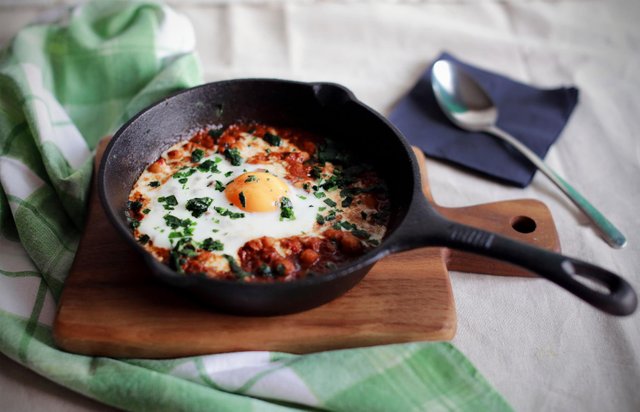FOOD TRAVEL : TUNISIAN DISHES AND WINES , YOU SHOULD KNOW
A A trip to Tunisia wouldn't be complete without a taste of the savory fusion of food and flavor it does so well. But don't worry—if you get hungry, you won't stay that way for long. Just don't forget to bring a friend: One chef calls Tunisia's signature cooking style “Generous. You can’t make couscous for one. It’s for five or six or 10! You can’t prepare for one. It doesn’t work.”
Tunisian cuisine is a diverse blend of flavors representative of the country’s past and central location in Northern Africa. While the cuisine varies across regions, Tunisian food usually combines French and African flavors with a spicy kick. Rooted by the country's staple food, couscous, Tunisian dishes often feature fresh seafood or hearty lamb depending on local availability. A melting pot of cultures, Tunisia doesn't just feature local food. Rather, foodies can savor all types of international cuisine in the country’s larger cities.And then there's Tunisia's secret culinary superpower: wine. Though the country's Mediterranean climate and rich soil makes it an ideal location for wine production, it's often overlooked as a wine hotspot. But Tunisia deserves respect for its rich wine history and modern cultivation of numerous grape varietals. Tunisians first began producing wine over 2,000 years ago, but Arab control in the eighth century nearly eliminated the practice. French colonization brought winemaking back to Tunisia in the late 1800s.The country’s wine production continues to have a heavy French influence, with reds and rosés dominating the scene. But local influence is long-lasting, too—today, most of Tunisia’s wine cultivation occurs in the country’s northern peninsula, Cap Bon, carrying on the legacy of the famous Phoenician agronomist Mago, who wrote the earliest instruction manuals on wine cultivation from Carthage around 100 B.C.
Whether you choose to indulge in a traditional Tunisian dish or raise a glass (or both), Tunisia is bursting with flavor and adventure. Here are ten favorite foods and wines to try:
Dishes
Couscous

Couscous is the centerpiece of traditional Tunisian cuisine. This staple food, which is derived from semolina, is popular across Northern African and is present on nearly every dinner table in Tunisia. A versatile, fluffy delight, couscous is prepared in endless ways across the country. In coastal regions, cooks prefer to serve it with fish, while interior regions opt for lamb and dried fruit. A local favorite, Sfax Couscous, is named for Tunisia’s second largest city, which is filled with fresh, abundant seafood.
Brik
Briks are a staple delight across Tunisia and can be found in little shops throughout the country. Similar to a samosa, a brik is made from wrapping delicate pastry dough around a variety of filling options, including potatoes, eggs, or tuna. The flavorful packets are then fried to golden perfection in grapeseed oil. These tasty, triangle-shaped finger foods are best served piping hot with a squeeze of fresh lemon juice.
Harissa
A thick, spicy paste made from hot chili peppers and garlic, harissa serves as the foundation for numerous Tunisian dishes. Harissa can be used as a condiment for grilled meats and fish or stirred into soups and stews for a hot kick. It is often served as a dipping sauce alongside bread. Harissa’s heat level varies depending on the number and type of chili peppers used. The peppers are typically smoked to add a complex, deep flavor. Across Tunisia, Harissa is often made in advance and stored for use in a variety of dishes.
Ojja
While typically a breakfast dish, ojja is finding its way onto lunch and dinner tables across Tunisia. Often considered fast-food by Tunisian standards, Ojja highlights the heavy influence of Berber flavors on Tunisian cuisine. Traditional ojja combines eggs and merguez, a spicy lamb sausage, in a savory tomato sauce for a hearty, filling meal. Ojja is best enjoyed with a side of grilled bread in place of a spoon or fork. Be forewarned: A hearty lunch of Ojja can make an afternoon nap a necessity.
YoYos
Tunisians take dessert seriously—anything but optional, it is routinely served after a large evening meal and accompanied with mint tea. Some local desserts include fresh seasonal fruit, sweet cakes, fried almond pastries, and ice cream. But Tunisian doughnuts, YoYos, are a unique delight. The delicacy combines the sweet flavors of honey with a subtle hint of orange. Their warm, glossy honey glaze makes them beautiful and fragrant as well as delicious.
Mint tea
The melding of many cultures and flavors is apparent in Tunisia’s most popular drink, mint tea. Served hot or over ice, the unique flavors of this fresh beverage are accentuated by the presence of pine nuts floating on top. The crunchy nuts provide a surprising twist of flavor and texture, especially for those not accustomed to earthy notes in a sweet tea.
WINES
Muscat
Tunisia has seven distinct controlled designation-of-origin regions known locally as AOCs (for their French name, appellation d’origine controlee). Naming of particular regions is modeled after the French, with whom Tunisia shares many of the same grape varietals. Case in point: Muscat is a popular white found in both France and Tunisia.
Gris de Tunisie

Gris de Tunisie, or grey Tunisian wine, is the country’s most famous and unique wine. Don't worry—despite its name, the wine is dusky rose in color and tastes like a fruity rosé. Best served on hot days paired with a spicy seafood dish, this local wine is easy to find and will satisfy a thirsty crowd
Chateau Mornag Rosé
Rosé wines dominate the scene in Tunisia and Chateau Mornags Rosé is the country’s most popular. Produced in the Mornag appellation area in Northern Tunisia, its light, crisp taste pairs best with the region's Mediterranean-influenced cuisine and seafood.
PLEASE COMMENT AND REVIEW , WAIT OUR DAILY ARTICLS ABOUT FOODS







Este Post ha recibido un Upvote desde la cuenta del King: @dineroconopcion, El cual es un Grupo de Soporte mantenido por 5 personas mas que quieren ayudarte a llegar hacer un Top Autor En Steemit sin tener que invertir en Steem Power. Te Gustaria Ser Parte De Este Projecto?
This Post has been Upvote from the King's Account: @dineroconopcion, It's a Support Group by 5 other people that want to help you be a Top Steemit Author without having to invest into Steem Power. Would You Like To Be Part of this Project?
This post has been ranked within the top 25 most undervalued posts in the first half of Aug 25. We estimate that this post is undervalued by $16.38 as compared to a scenario in which every voter had an equal say.
See the full rankings and details in The Daily Tribune: Aug 25 - Part I. You can also read about some of our methodology, data analysis and technical details in our initial post.
If you are the author and would prefer not to receive these comments, simply reply "Stop" to this comment.
Congratulations @adinoshedi! You have completed some achievement on Steemit and have been rewarded with new badge(s) :
Click on any badge to view your own Board of Honor on SteemitBoard.
For more information about SteemitBoard, click here
If you no longer want to receive notifications, reply to this comment with the word
STOP